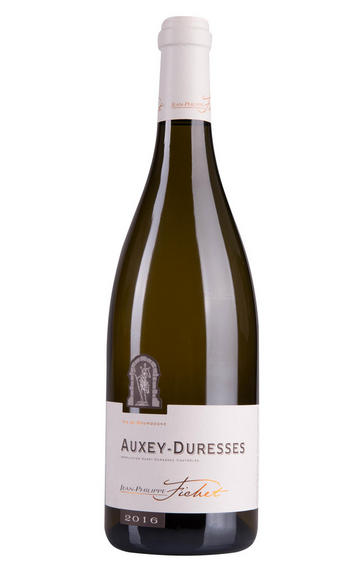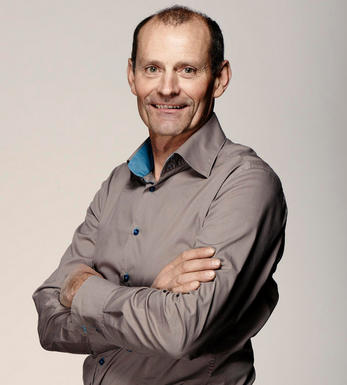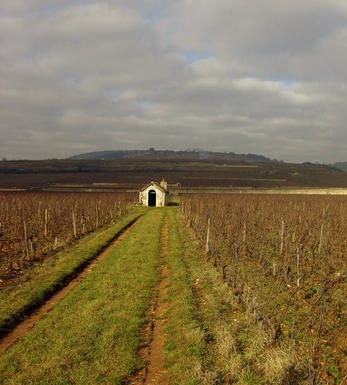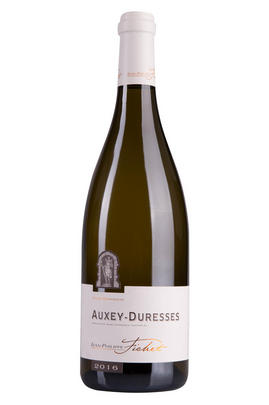
About this WINE

Jean-Philippe Fichet
Jean-Philippe Fichet made his first vintage in 1981. After a few challenges, he settled into his current – and rather splendid – cellars at Creux du Coche, by the Hôpital de Meursault.
About Jean-Philippe Fichet
Over the years, Jean-Philippe has built up an array of Meursaults, all from lieux-dits. He has no Premiers or Grands Crus in the village, though there’s a small parcel of Premier Cru Referts in Puligny.
In the vineyard
Jean-Philippe is very much a vigneron; it’s the time in the vineyard that counts. He believes that soil health is critical, and for 15 years he’s been making and applying his own compost to his vineyards.

Auxey-Duresses
A small village in a side valley off the Côte de Beaune, with a slightly cooler local climate making for a more austere style of Burgundy. Nonetheless this can be an excellent source of relatively inexpensive wine in warmer years, or from top producers. At the moment production is about 75:25 red to white. The reds can age well, while the whites can have a most attractive minerality.
- 138 hectares of village Auxey-Duresses
- 32 hectares of Premier Cru vineyards (nine in all), the best being Les Duresses
- Recommended producers: Comte Armand (red), Fichet (white)

Chardonnay
Chardonnay is often seen as the king of white wine grapes and one of the most widely planted in the world It is suited to a wide variety of soils, though it excels in soils with a high limestone content as found in Champagne, Chablis, and the Côte D`Or.
Burgundy is Chardonnay's spiritual home and the best White Burgundies are dry, rich, honeyed wines with marvellous poise, elegance and balance. They are unquestionably the finest dry white wines in the world. Chardonnay plays a crucial role in the Champagne blend, providing structure and finesse, and is the sole grape in Blanc de Blancs.
It is quantitatively important in California and Australia, is widely planted in Chile and South Africa, and is the second most widely planted grape in New Zealand. In warm climates Chardonnay has a tendency to develop very high sugar levels during the final stages of ripening and this can occur at the expense of acidity. Late picking is a common problem and can result in blowsy and flabby wines that lack structure and definition.
Recently in the New World, we have seen a move towards more elegant, better- balanced and less oak-driven Chardonnays, and this is to be welcomed.



Buying options
Add to wishlist
Description
Fichet’s Auxey comes from two parcels; the south- facing Les Nampoillons, which is in the fault running towards St Romain, and Les Closeaux, on the Meursault side of the village. Forty percent of the crop was lost to frost damage and, when tasted in October, this was somewhat closed, but there is a pure, citrus-driven fruit profile. With age this is likely to fill out a touch but will remain a linear expression. Drink 2020-2024.
Adam Bruntlett, Burgundy Buyer
Fichet’s big step forward came in 2000 when he moved the whole operation to splendid cellars at Le Creux du Coche by the Hôpital de Meursault. Jean-Philippe is looking for purity in his wines. He deals mostly with lieux-dits in Meursault with just one Premier Cru in Puligny. Constantly experimenting and refining, his wines have real definition and individuality, with the individual terroirs clearly exposed. The wines are raised in barrel for the first year, using larger demi- muids for the lesser appellations, then assembled in tank. A maximum of 30 percent new oak is used on any cuvée. It is hard not to be infected by Jean- Philippe’s enthusiasm and positivity. Despite being 40 percent down in 2016, he remained upbeat, explaining that he sees the variability of vintages as part and parcel of a vigneron ’s lot. The losses could have been much worse, but the domaine is equipped with candles which protect against frost and they work hard in the vines to keep grass low to reduce the risk of frost damage. He declared himself happy with the quality, but feels it is a vintage which will require patience on the part of the consumer, as many of the wines will be more austere in youth than those of 2015.
wine at a glance
Delivery and quality guarantee